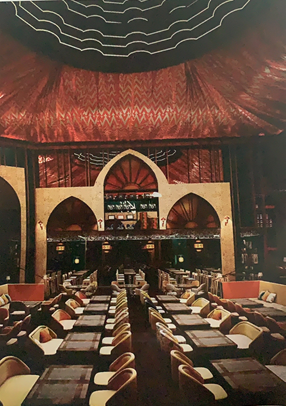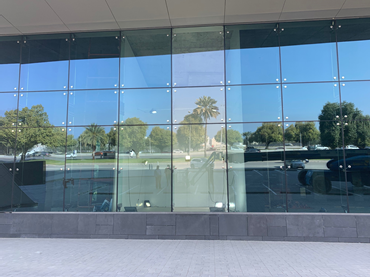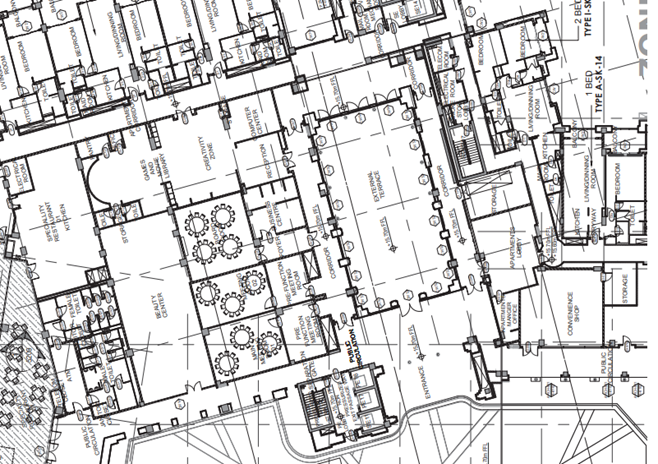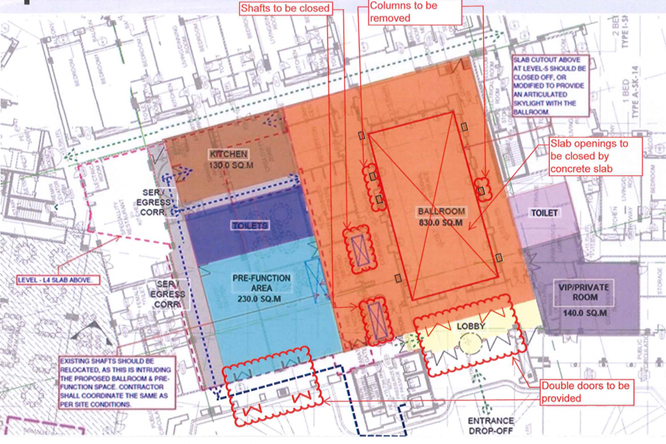-
Paper Information
- Paper Submission
-
Journal Information
- About This Journal
- Editorial Board
- Current Issue
- Archive
- Author Guidelines
- Contact Us
International Journal of Construction Engineering and Management
p-ISSN: 2326-1080 e-ISSN: 2326-1102
2021; 10(2): 48-53
doi:10.5923/j.ijcem.20211002.03
Received: Jun. 8, 2021; Accepted: Jul. 7, 2021; Published: Jul. 15, 2021

Project Management Challenges in Family Owned Business
Arch Ahmed R. Hammad
Professional Project Manager, Alfardan Properties, Doha, Qatar
Correspondence to: Arch Ahmed R. Hammad, Professional Project Manager, Alfardan Properties, Doha, Qatar.
| Email: |  |
Copyright © 2021 The Author(s). Published by Scientific & Academic Publishing.
This work is licensed under the Creative Commons Attribution International License (CC BY).
http://creativecommons.org/licenses/by/4.0/

This paper will discuss the impact of individual owner's decisions on projects by presenting different case studies and particular experiences while working for a private family-owned property development company. The discussion of this paper will demonstrate different situations were owners and senior management took discrete resolutions based on personal desire which have impacted projects time, cost or quality. Project managers will find it challenging to perform basic project management procedures and proficiency in providing technical advices to handle the changes in a more professional manner while working for this type of family business where owners and senior management are giving single decisions without executing proper due-diligence from the experts. There aren’t many literature discussing this topic specifically, as most of the researches are discussing family business in general, nonetheless, this paper is focusing on the impact on projects and the difficulty of handling projects while working for private owners who take decisions based on general knowledge or personal appetite. This paper is based on physical instances and situations and case studies.
Keywords: Family business, Project management, Challenges, Personal decisions, Change management
Cite this paper: Arch Ahmed R. Hammad, Project Management Challenges in Family Owned Business, International Journal of Construction Engineering and Management , Vol. 10 No. 2, 2021, pp. 48-53. doi: 10.5923/j.ijcem.20211002.03.
Article Outline
1. Introduction
- During the research on similar topics, it was challenging to find papers, discussions or journals that discussed the challenges that may face a project manager while working for a privately owned property development company. Many project management terminologies will have different meanings and transformations when it comes to family business and their interpretation of each term. Such as project management, value engineering and design management. Every family business has already established its own set of values and objectives which were built over generations, so it will be very difficult to try and change any of these. So the idea is to understand the legacy behind this family business, and what are their personal values. While trying to implement proper project management methods which will – most of time – be challenged by the owner being the ultimate decision maker. When it comes to professional advice on any impacts of personal decisions, usual this is challenged and the project manager will be unable to apply any theoretical or practical expertise in such cases. From the business side, projects are more related to personal opinion (in this case will be the owner), personal preferences, connections and favouritism. This will be further detailed in this paper and how this will have an impact on projects and decisions. Finally, families are risk-averse, in other words they invest less in innovation and research but still seems to generate more innovative output because they apply for significantly more patents [1]. To elaborate more on this point, project managers will find it difficult and challenging to implement proper project management standards while managing projects and developments in a family business as this will always be challenged. The only technique for survival is to implement the owners' requests without deploying your proficiency or knowledge on the decision but to attempt to reduce the impact on determined directions.
2. Hierarchy, Culture and Associates
- The decision to transfer from none-family organization to a family-owned business sometimes might be very difficult. Even by trying to search their website and other social media publications, this will not give the real insights of how personal decisions are taken within the company and how this will impact the professional achievement on project management. From the very first date of joining, it is important to understand the culture of the company, the hierarchy of the organization, teams and associates as briefed below:- Culture: in large corporates, organizational culture refers to the beliefs and values that have existed in that organization, and to the foreseen values of the staff work that will influence their attitude and behaviour [2]. However, in family-owned business, organizational culture is more in to how to handle authority, power, leadership, decision-making, performance measurement and relationships with partners and customers [3]. Here it says: Culture shapes the behaviour. The whole behaviour of a manger will transform based on the role, responsibilities and the power been given to him/ her and this will dictate the culture of members working for this manager. - Hierarchy: this a standard and typical term used everywhere, but it is very important to understand who superiors who, and who has more power and influence in the company regardless of the title. In family businesses, it is noticed that some key members has bigger influence and decision making than others. This will change the way of understanding hierarchy and positions as the power of change usually being controlled. In other words, influence is usually controlled by specific senior management members and gives them the right to change without following proper scientific or technical exploration or even by referring to the skilled team members for proper recommendation, and this will impact negatively on the team members and their confidence. - Associates: one of the biggest downside of any business is teaming, connections and allies. This is often found in family-owned business where some team members' target is to thrive in front of the owner. This is an important aspect to understand when joining a family business as it will save efforts and energy for the new joiner when trying to compete or prove themselves. This is from cultural point of view, on the other hand, as this paper will discuss the technical and project management side in a family-owned businesses, where project management will have a slight different interpretation than the international definitions for couple of terms such as, design management, project management and value engineering as these terms will be controlled by the decision makers irrelative of how and why the change is being adopted.
3. Originality/Value
- This paper discuss and present the challenges during the application of project management practices while managing projects which are family owned or within a family business establishment. Also it represents couple of case studies where owners have taken individual decisions based on personal perception and the impact of such decisions on projects.
4. Objective
- Main objective of this study is to demonstrate to project managers the challenges faced while working for a family-owned business especially that deals with project development and the difficulties to implement proper project management methods and expertise when decisions are based on sole judgement.
5. Project Management Discussion in a Family Business
- By definition, a project is a multifaceted system, consisting of many interrelated sub-processes. In any project, it is essential to satisfy both technical requirements and budget compliance in order to meet the deadline [4]. Technical requirements in a family business, is considered the most difficult one, since their projects unique nature makes family firms a challenging context for Project Management as it requires to convince the management and the owners of the knowledge and technical strength were both are always in doubt (if the project leader doesn’t belong to the family especially). Owners are usually keen to collect general information from the market or from other family members who are good in construction for example, then use this of information to challenge the knowledge and past experience of the project manager. In nutshell, family firms usually show a lower level of professionalization and managerialization [5] in comparison with non-family ones, and this fact can easily undermine project and knowledge management practices [6]. The other key element of project management is budget compliance: this term is flexible and expandable based on the financial power of the family. It becomes a personal preference of the owner whether to spend money on a project or not based on the company cash-flow and personal appetite in that project. Where in other non-family business, the set budget is fixed since this will define the success of that project and the profitability as it has been already registered in the financial books. In family-owned business, each project budget is defined independently based on the attitude of the owners at the time of the launch, in addition to other political and family members influence on that development. Another point of discussion which falls under project management is value engineering. As it is known, Value Engineering is an organized attempt to optimize the overall value of the project in project management endeavour [7].This means that the project manager or decision makers who are working on the project must consider all cost associated with the project from initial design stages to completion to meet the project the budget or even lower without comprising the quality of design or final product. In the case of family-owned business, Value engineering can be translated in to many different aspects subject to the owner's personal judgment. Value Engineering can be simply applied by eliminating or adding architectural features, changing finishes specifications or even introducing or terminating new spaces which they believe in their personal opinions is essential. This type of value engineering might end with some cost cutting but in return has ignored completely the fundamental meaning of value engineering which is maintaining the original design quality. The final product might satisfy the personal taste of the owners but has jeopardized the role of the designer and the project manager in practicing the role been assigned to him/ her.
6. Case Studies – The Real Impact
- In the few following pages, couple of case studies will be presented for discussion purposes only which will reflect the impact of individual decisions on projects from time, cost and quality. The case studies reflects the author's personal assessment and opinion. The discussion will cover 2 areas: fit-out projects and Major developments.
6.1. Fit-Out Projects
- Fit out projects are increasing recently in the GCC and around the world especially with the surrounding situation and global pandemic where investors focus on refurbishments and fit out projects rather than building new structures to reduce the financial exposure. One of the challenges that faces any project is the change management post commencement [8]. Realistically almost all projects have changes after starting the work, however, the challenge is to manage the changes in the scope of work and to determine if the change can be disregarded or it can be absorbed within the project budget. In most family- owned business, and as explained above, owners would like to intervene in the design and to express their design desire at sites and during the construction. Or sometimes a sudden change of function could cause the project budget to go the roof. “Figures 1 & 2” are an illustration of a completed project where the area was designed as an outdoor terrace with swimming pool. Due to market demand, and in order to accommodate one of the tenants, it was decided to close the area and to convert it to an indoor space.
 | Figure 1. Existing outdoor terrace |
 | Figure 2. Existing outdoor terrace |
 | Figure 3. Project rendering |
 | Figure 4. Actual internal photo |
 | Figure 5. Project Rendering |
 | Figure 6. Actual outdoor photo |
 | Figure 7. Glass samples in the middle |
6.2. Major Projects
- Late decisions and changes on large scale projects will have major impacts on time, cost and quality. To understand change management and its impact on projects, we must look at two components, Change and Management [9]. Change: This is anything that transforms or impacts projects, tasks, processes, structures, or even job functions [8]. Project management: This refers to the process of managing a project team and monitoring their activities to meet project goals [9]. By considering both components above for any change management, it is vital to explain to the ownership the required change and the impact of such request. The challenge originates from performing project management in family owned business when trying to implement a professional project management expertise. The below case study in (figure 8) reflects a radical change requested by the ownership during the handover stage of a large scale development. The instruction was to change the function of a specific area into a totally new purpose.
 | Figure 8. Original layout design |
 | Figure 9. Revised design layout |
7. Conclusions
- This paper has briefly described the main challenges that might face any project manager during implementing project management methods when working for a family-owned business especially – in this paper - if the business is a property/ real-estate development company. The paper describes the authors' personal experience during managing projects owned by a single owner. The challenges can be summarized in decision making process and how to translate these decisions into workflow. Also it highlights the difficulty of implementing proper project management methods and technical advice to the owner especially if the upper management are none technical related backgrounds. It is essential for any professional project manager to highlight – during the interview – the importance of his/ her role in projects and make sure the owner's appreciation and requirement for the technical and theoretical advice been given by the project manager and the substance of his/ her technical opinion. Finally, project managers might need to change the way of thinking towards projects especially when decisions are made late in the process. This is called reactive thinking rather than being proactive. This technique will be celebrated in other papers.
ACKNOWLEDGEMENTS
- This paper is fully supported by the best dad, friend, and mentor: Prof. Dr. Arch. Rizeq N. S. Hammad, Jordan University, Amman, Jordan. His continuous support, reviews and inspiration are countless.
 Abstract
Abstract Reference
Reference Full-Text PDF
Full-Text PDF Full-text HTML
Full-text HTML